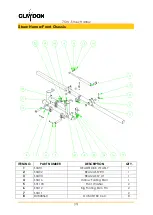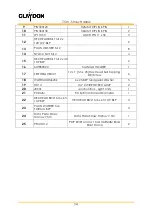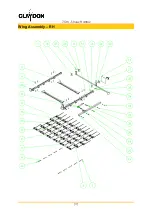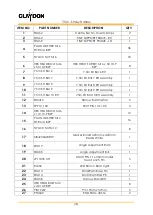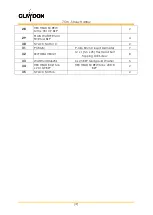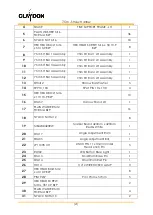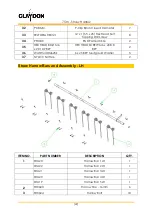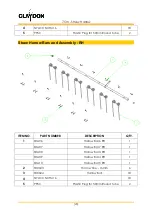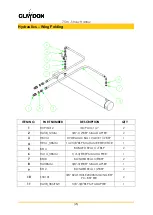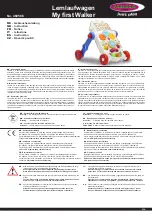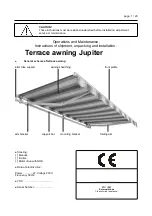
7.5m - Straw Harrow
[10]
5.3. Field Use
For best results it is suggested that the Straw Harrow should be used at an angle of 30º to the
direction in which the field was harvested, this will ensure straw and chaff is spread evenly
across the field. If you are using a Claydon Drill after the harrowing operation it is advisable to
travel in the same direction as you are intending to drill.
Whilst in use, the Harrow should be dragging a small amount of straw along the ground and
slowly distributing it out the back of the machine. This will even out the straw and chaff layer
across the entire field (Figure 8).
Figure 8: Straw and chaff being distributed out the back of the Harrow
The Claydon Straw Harrow can be used on stubble fields where the straw has been baled, or
on OSR/Bean stubble as a method to start weeds chitting and a form of slug control. In this
scenario the tines can be set to a very aggressive angle to maximise soil movement.
You should pull the Claydon Straw Harrow as quickly as you can (within reason). From time to
time (very rarely) the Straw Harrow can catch a lump or a tramline and start to bounce, in
this scenario you should slow down or stop until the machine has settled and then carry on as
normal. To avoid this completely, it is recommended that a small amount of the Straw
Harrows weight (about 10%-20%) should be carried on the tractors 3-point linkage.
When in use the Straw Harrow should be kept on the ground at all times and not lifted up
when making headland turns. On completion of the field, ensure the harrows tines are fully
folded back before the machine is folded up.
TIP:
Rape straw should be harrowed in the morning whilst the morning dew is present and
Wheat straw should be harrowed in heat of the sun. This will ensure the correct
shattering effect is achieved.
When harrowing a field it is recommended that the operator should turn inside the
headland tramline, this will avoid pulling grass or weeds into the field.

















